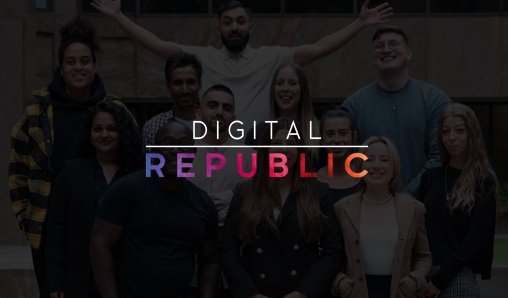
Digital Technology And Youth Mental Health: Is Technology Good Or Bad?
When it comes to the provision of young people’s mental health services, an enormous gap exists between what we know and what we do. Clinical therapies are advancing in sophistication and effectiveness. Yet provision (infrastructure, capacity and funding) can’t keep up with the sharp rise in young people seeking help for issues such as anxiety, depression and eating disorders.
Creative and effective delivery strategies are going to be essential if we are going to take advantage of this advancing knowledge. We live in a world where digital technologies are used to improve all areas of our lives. So it’s not surprising that there are a growing number of digital solutions emerging to deliver effective clinical support.
But digital technology and mental health have a strained relationship. This article – the first in our four-part series on digital technology and youth mental health – tackles the question: when it comes to youth mental health, is digital technology good, or bad?
About this series
Before we get into that, let’s cover off what’s coming in the rest of the series. In part two, we explain what ‘Stepped Care’ is all about, along with an introduction to the use of digital technologies for the delivery of mental health services (also known as ‘E-Mental Health’). Part three looks at the role of digital technology in the delivery of clinical mental health services. We round things out in part four with an exploration of how digital technologies might enhance mental health support in the future.
The scale of mental health problems throughout the world.
Worldwide 10-20% of children and adolescents experience mental disorders. Half of all mental illnesses begin by the age of 14 and three-quarters by mid-20s. While 14% of the global burden of disease is attributed to mental health disorders, most of the people affected – 75% in many countries – do not have access to the treatment they need. According to the latest WHO studies:
- Mental health conditions account for 16% of the global burden of disease and injury in people aged 10–19 years.
- Half of all mental health conditions start by 14 years of age but most cases are undetected and untreated.
- Globally, depression is one of the leading causes of illness and disability among adolescents.
- Suicide is the third leading cause of death in 15-19-year-olds.
The consequences of not addressing adolescent mental health conditions extend to adulthood, impairing both physical and mental health and limiting opportunities to lead fulfilling lives as adults.
Digital technology and youth mental health – a double-edged sword.
When it comes to youth mental health, the link to digital technology doesn’t currently make good reading.
A 2017 study found a sudden increase in teens’ symptoms of depression, suicide risk factors and suicide rates in 2012 — around the time when smartphones became popular. And this is worrying trend is continuing, with Samaritans reporting that suicide rates increased for all groups of young people in 2018.
Research also makes a strong link to screen time, reporting that teens who spend five or more hours per day on their devices are 71 percent more likely to have one risk factor for suicide — no matter what they’re doing online.
And it’s not just screen time that’s the problem.
With an increasing amount of communication happening through technology, young people are finding it harder than ever to develop intimate relationships. With the emergence of technoference (the ways in which smartphone use interferes with or intrude into everyday social interactions), research shows a clear evolutionary mismatch between smartphones and social behaviours. The kinds that form and maintain close social relationships.
Young people, whilst appearing far more connected than previous generations, are creating relationships which are superficial at best. Striving for more connections is leaving young people feeling less connected — detachment instead of engagement.
A recent study of 2390 teenagers discovered that social media has a direct and significant negative impact on their self-esteem. Social platforms such as Instagram drop young people into a feeling of inadequacy, thanks to streams of ‘successful’ and ‘beautiful’ people.
Of course, this is nothing new. Young people have always compared themselves to their peers. However, the concentration of this information, along with the 24/7 social media streams have exacerbated the problem – with more serious consequences.
Finally, there is the growing issue of cyberbullying. Ditch The Label’s Annual Bullying Survey of 2017 shows a worrying trend. Only 35% of UK students have never been a victim of cyberbullying. Even more concerning is that 7% admit they suffer from this type of behaviour regularly. Of those bullied in the last year, 37% developed social anxiety, with 36% falling into depression.
Turning digital technologies into a force for good
With digital technologies appearing to be a direct cause of mental health problems in young people, how can we possibly change this trend – and use digital technologies as a solution?
The good news is that, over the past few years, mobile and wireless technologies have been fuelling new innovations in mental health care.
Many young people, recognising the need for help, are turning to technology – smartphone apps, websites and social media to manage their own mental well-being. With such an evident skills shortage, it isn’t a huge leap to see how digital technology could offer a more structured clinical therapy, training and provision for professionals in the early stages.
Mental health apps are rising in popularity, evidenced by a significant increase in the number of people searching for mental health apps via Google. And supply shows a similar trend to demand. There has been a steady increase in the number of mental health apps on the market, with NBC reporting in 2017 that there were over 10,000 mental health apps in existence. Apple’s Best of 2018 report contained ‘self-care’ as the major trend of 2018.
Social media is also used as a megaphone for raising awareness of mental health issues, via sites like YouTube. The amount of content available through dedicated mental health channels is also growing, with channels that address the subject like The School of Life, sites such as The Mighty, and independent counsellors/psychotherapists such as Julia Kristina and Kati Morton (to name just a few).
Young people are also increasingly finding guidance through internet-based support groups, like the UK’s Big White Wall, Elefriends, or subreddits like /r/depression. In contrast to face-to-face support, where people may be uncomfortable opening up, the anonymity and stigma-free nature of these platforms can motivate people to speak more freely and reduce the perceived risk of judgement.
Digital technologies can also remove barriers to support, such as living in a remote area or an inability to travel. With the rising popularity of telehealth, young people can now seek support from counsellors and therapists online. Big White Wall, mentioned above, provide this service, as do health tech company Mynurva. The NHS’ long term plan states that they plan to “make digital health services a mainstream part of the NHS so that in 5 years, patients in England will be able to access a digital GP offer.” And, with everything happening with COVID-19, things could happen much sooner.
If you found this blog interesting, you might want to check out this one too!
Are you a digital practitioner who has got more questions than answers during these uncertain times? Contact us submitting a quick form here. We are here to support you!
Digital analytics, cloud, data science, programmatic or optimisation expert, and looking for a job at the moment? Check out our latest live vacancies here



